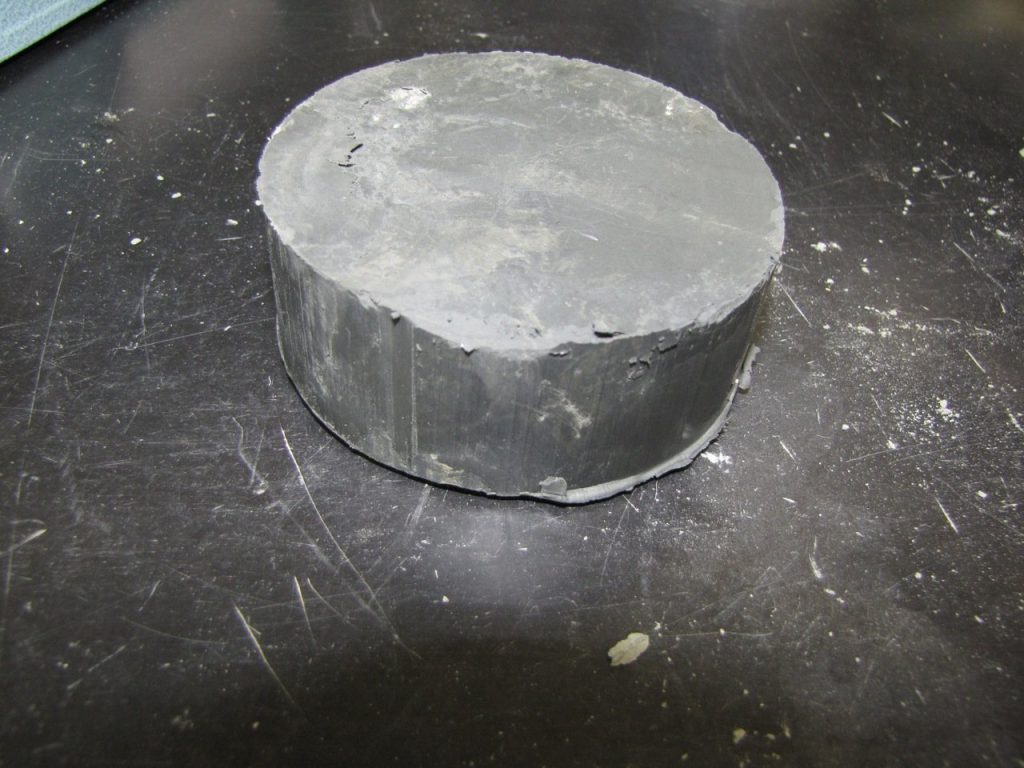
Samping in the Chemistry Lab
Core on deck is the call to everyone that another tube of rock has been recovered from the seafloor. That’s when the fun begins. The core has many different paths it may take and some of it ends up as a hockey puck.
First come the chemists while the core is on the catwalk. The organic chemists collect the gas from the core, for the safety and science. Then the inorganic chemists select what section of 10 cm they would like as a whole core. I’ve been working a lot in the chemistry lab, so I’m going to tell you what’s happening with the whole core.
.jpg)
With a 10-12 cm whole section, the rock is cleaned a bit. The drilling fluid gets the rock wet and we want to measure pore water (that’s water in the spaces inbetween the minerals). So anything that looks too wet is scraped off. Different rock types come out of the ground differently. These shavings are from a very hard dry rock. We also find shells, wood or carbonate concretions which go upstairs in treasures box.


Most of the sample is squeezed and squeezed to get all the pore water out. This water is very important to tell the story of what is going on below. The upper rocks have much more water than the lower ones, but it also depends on what kinds of rocks. About 40 ml of water can come out of 10 cm long x 15 cm diameter cylinder of rock. The rock is placed into the silver vessels with a syringe to collect the water. These squeezers were going night and day for the first few days. We end up with the water which is used in many chemical analyses (alkalinity, major ad minor elements, nutrients, etc) and a squeeze cake.

About 2 cm of the whole core is divided between many different types of samples, most to be analyzed back at the scientists home laboratories. Me and a few non-chemistry scientists come regularly to the lab to divide up this material. About 10 cc is vacuum packed and frozen. Every other core some material is frozen in a glass bottle or is wrapped in plastic wrap, then into a bag, sealed, labeled, and then into a second bag to be sealed again. Another 5 cc is for a shipboard analysis which tells the mineral composition (and that bag doesn’t need to be sealed). A 20 cc piece is just placed in a bag. And how could I forget the little jar that holds about 10 cc and needs its number recorded and then taken upstairs? I think that is it! Each sample goes into its own box.
.jpg)
Back to the squeeze cake. It also is divided up into samples for testing. This dense hockey puck has the same kind of dividing and storing as from the fresh core, with a one additional type – vacuum sealed but not frozen. More sealing of bags and labels.
Are you ready to sign up for sampling duty?
In another post, I’ll tell you what is happening in the core lab. Saws, drills, camera, and more sampling.